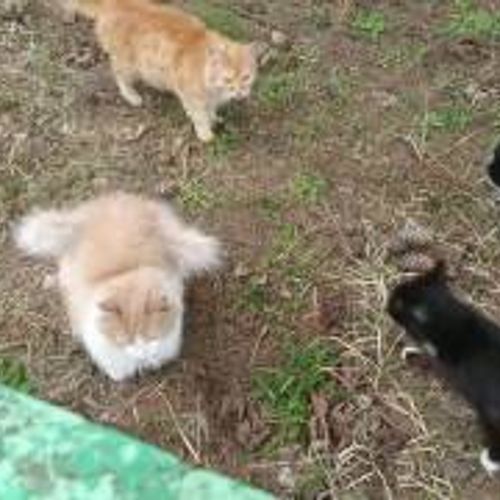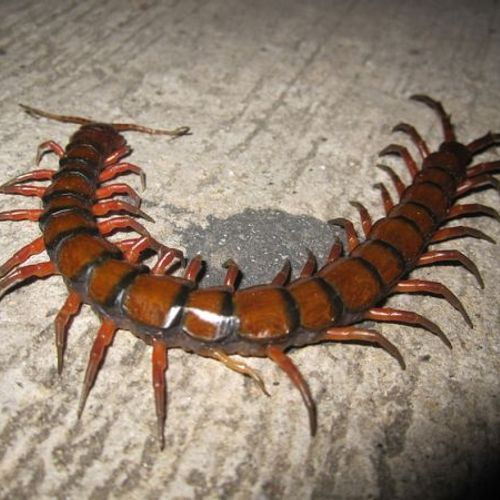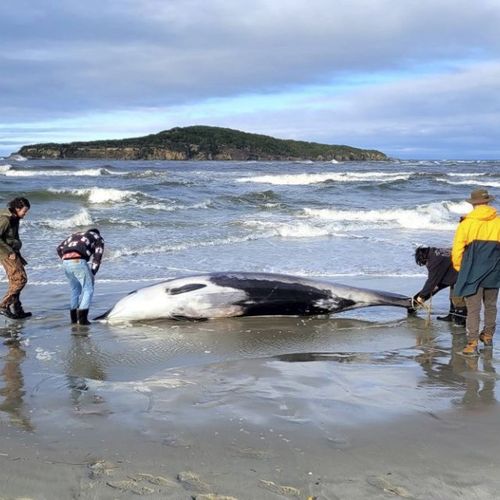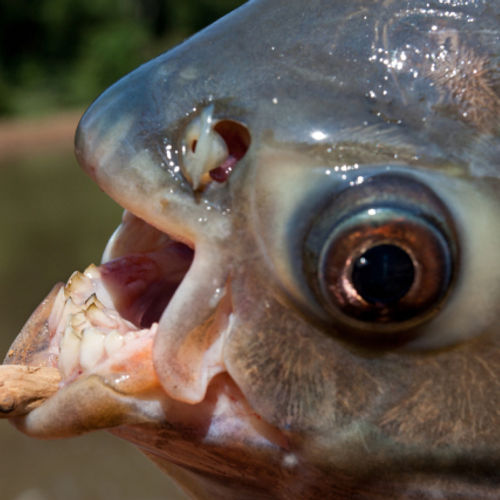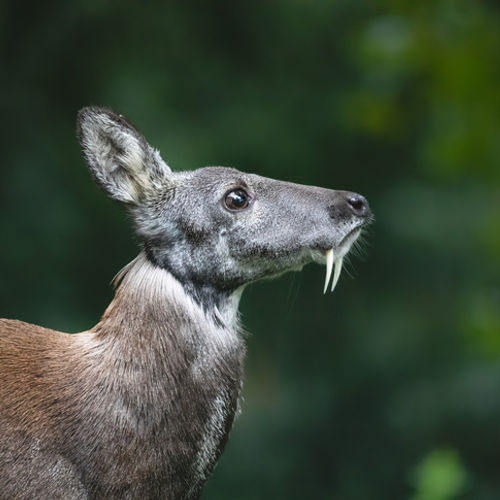
| Added | Mon, 24/07/2023 |
| Источники | |
| Дата публикации | Mon, 24/07/2023
|
| Версии |
In the Siberian and Far Eastern taiga, among the rocks and dense thickets of bushes, one of the most mysterious and rare animals is hiding - musk deer. It is a small and graceful ungulate, also known as the musk deer (Moschus moschiferus). Despite its small size, musk deer has unique features that make it a true master of survival in the harsh conditions of Siberian nature.
Musk deer does not have horns, as they would prevent it from moving in dense wilds. Instead, male musk deer have long and sharp canines that protrude outward and give them an intimidating appearance. In addition, males have a musk gland in the back of the belly, which serves to attract females and scare off competitors.
Musk secreted by musk deer has a special meaning for humans. For centuries, people have hunted this animal for its musk, which was valued as a miraculous medicine in Tibet, Mongolia and China. In Europe, musk was added to perfumes to give them a persistent aroma. Even in Iran, more than six hundred years ago, a mosque was erected, to which musk musk was added, so that the building would always smell fragrant and remind of the grace of Allah.
However, the popularity of musk has led to the fact that musk deer has become a rare species. In the XIX century, hunting for musk deer reached its peak, and only thanks to the measures taken to regulate hunting, it was possible to save this species from complete extinction.
Musk deer avoid meetings with humans and skillfully disguise themselves. Their color, chocolate-brown with spots, helps them to remain invisible among rocks and thickets of bushes. If they notice danger, they freeze and do not betray their presence even near the enemy. When they manage to escape from danger, they freeze again to watch their pursuers from a safe distance.
Musk deer also show incredible climbing skills. They easily climb vertical cliffs and jump on rocky surfaces. Their widely spreading hooves allow them to stay in the most inaccessible areas.
Musk deer prefer to walk on their own trails and rarely deviate from the usual routes. They are also very clean and have a special place that they use as a restroom.
Musk deer fur is thick, but brittle, which allows them to keep warm and not get wet while lying in the snow. This provides them with good thermal insulation and protection from the cold.
Musk deer mainly feed on lichens, forest grasses, tree shoots, mushrooms and berries. They usually do not gather in large groups, except for the rutting period, which falls on December. At this time, peaceful and cautious musk deer become formidable fighters and use their sharp fangs-sabers to clarify relations with competitors. Sometimes these contractions can lead to serious wounds, but they occur extremely rarely.
Musk deer is a unique animal that has skillfully adapted to life in the harsh conditions of Siberian nature. His incredible skills in disguise, climbing and survival make him one of the most mysterious and interesting inhabitants of the taiga.
Description and features
The saber - toothed musk deer has a body length of up to 1 meter and a height at the withers of up to 70 cm . Its tail reaches from 4 to 6 cm. The mass of this beast is from 11 to 18 kg. Musk deer has a thick and long coat, but it is brittle. The color can be brown or brown. In the hair cover, the guard hairs predominate, and there are few downy ones. Thanks to this wool, musk deer has excellent thermal insulation. When she lies on the snow, the ice under her does not melt, unlike other animals such as deer, elk or roe deer. In addition, musk deer wool does not let water through, which allows it to stay afloat when crossing reservoirs.
Unique abilities
Musk deer has amazing abilities that help it survive in the wild. She can dramatically change the direction of movement by 90 degrees to evade predators such as wolverine, lynx or fox. This turn looks amazing and allows musk deer to avoid danger. It is capable of performing such maneuvers at a speed of at least 50 km/h.
Enemies and Hunters
Musk deer has many natural enemies. In the Far East, its main enemy is the harza, or Ussuri marten, which hunts musk deer and its family. Wolverine and fox are also chasing this beast. Musk deer has many enemies in its nature, but it skillfully evades them and is able to protect itself.
Mating season and battles
Musk deer is a special kind of deer, known as a deer. She doesn't have horns, but instead she has two impressive fangs. Musk deer use these fangs to check the steel grade of the opponent's testicles during mating matches. During the breeding season, two males walk in a circle at a distance of several meters from each other and show their fangs. They try to give themselves a more belligerent look by increasing the size of their carcass and ruffling the fur on their back, sides and buttocks. In most cases, such skirmishes end in peace, but sometimes they fight using their fangs. In such fights, the fangs often break off, and the defeated male is left with bleeding wounds.
Reproduction and life expectancy
The winning male receives a deer ass as a reward, and after 180 days 1-2 little vampires are born. Young musk deer reach sexual maturity at the age of 15-18 months. In nature, their life lasts about 4-5 years, and in captivity - 10-14 years.
Amazing smell
Male musk deer secrete pleasant aromas from a special gland on the belly. These scents inform females about the health status, age and status of the male. They secrete musk, the most expensive substance of animal origin, which is used in perfumery. One gland of an adult male contains from 10 to 20 grams of natural musk.
Новости со схожими версиями
Log in or register to post comments

